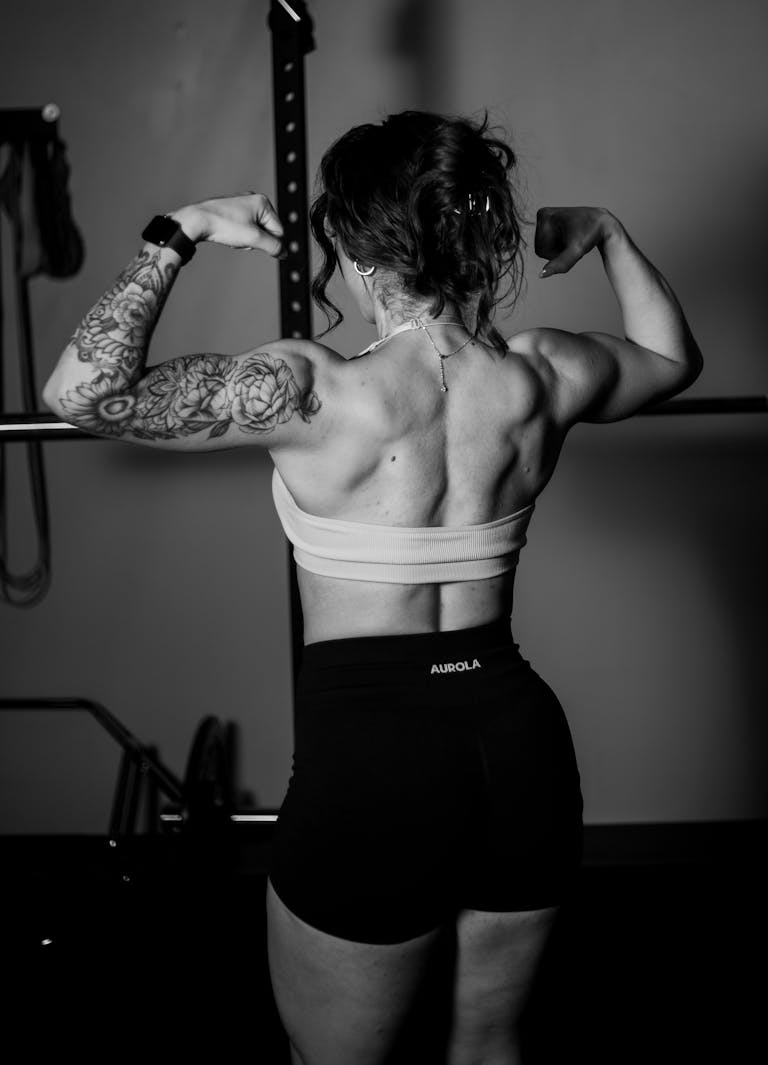FREE SHIPPING OVER $50
Weak Balance? This 7-Minute Routine Strengthens Stability Better Than Yoga (No Mat Required)
If you’ve ever stumbled while standing on one foot or felt wobbly during your workouts, your balance might need a little work. But here’s the good news: you don’t need to be a yogi or spend hours training to fix it. In fact, this simple 7-minute routine can improve your balance and strengthen your stabilizer muscles faster than most traditional yoga practices—and you won’t even need a mat.
Let’s break down why balance matters more than you think, what muscles are really responsible for keeping you steady, and how this short, daily routine can improve your posture, coordination, and confidence.
Why Balance Is a Big Deal (And It’s Not Just for Athletes)

Good balance isn’t just about preventing falls (although that’s a big part of it). It also:
- Enhances athletic performance
- Reduces injury risk
- Improves posture and joint alignment
- Increases coordination and reaction time
- Supports long-term mobility and independence
Unfortunately, balance tends to decline with age, sedentary habits, or muscle imbalances. And here’s the kicker—most people don’t even realize their balance is off until they try a single-leg exercise or miss a step on the stairs.
This is where a focused, short routine makes a huge difference. While yoga certainly helps, not everyone wants to commit to long sessions, complicated poses, or floor work. That’s why this no-mat routine works so well—it’s effective, time-efficient, and requires zero equipment.
What Makes This 7-Minute Routine So Effective?
It’s designed to hit all the key areas involved in balance: ankles, knees, hips, core, and even your brain. Plus, it activates the proprioceptive system—your body’s ability to sense where it is in space—while engaging the deep stabilizing muscles that often get ignored in traditional workouts.
Even better, you’ll train both static (holding a position) and dynamic (moving through space) balance in just a few minutes.
Do This Daily: 7-Minute Balance and Stability Routine (No Mat Required)
You can do this routine barefoot for even better feedback from the ground, or in flat shoes. All you need is a small open space and your body.
1. Single-Leg Stand (1 minute total)
Description: Stand tall and lift one foot off the ground. Hold for 30 seconds, then switch sides. For a challenge, close your eyes or turn your head side to side slowly.
Why it works: This move trains your ankles, glutes, and deep core muscles. It also improves your proprioception and focus.
2. Toe-to-Heel Walk (1 minute)
Description: Walk in a straight line, placing your heel directly in front of your toes with each step, like walking a tightrope. Keep your arms out for balance if needed.
Why it works: Strengthens your lower legs, improves coordination, and mimics real-world movement patterns that require stability.
3. Clock Reach (1 minute)
Description: Stand on your left foot and reach your right foot forward like you’re pointing to 12 o’clock on a clock face. Then reach to 3 o’clock, 6 o’clock, and 9 o’clock. Repeat on the other leg.
Why it works: Improves dynamic balance, ankle stability, and hip control while challenging your coordination.
4. Lateral Leg Swings (1 minute)
Description: Stand tall and swing one leg out to the side and across your body, letting it flow naturally. Use a wall or chair for light support if needed.
Why it works: Encourages balance during movement and strengthens the hip abductors—key muscles for pelvic and core stability.
5. Standing Knee Drive (1 minute)
Description: Stand on one foot and drive the opposite knee up quickly like you’re running in place but holding the position at the top. Hold for a second, then switch legs.
Why it works: Builds hip flexor strength, improves posture and coordination, and challenges your core to stabilize your standing leg.
6. Side-to-Side Step-Touch (1 minute)
Description: Step to one side, touch the floor with your hand (if you can), then step back to the center. Repeat side to side at a controlled pace.
Why it works: Engages lateral movement, challenges balance, and improves lower body control—especially useful for daily activities like reaching or turning.
7. Standing Arm Swings with Head Turns (1 minute)
Description: Swing your arms forward and back while turning your head slowly left and right. Keep your feet planted and your core engaged.
Why it works: Activates your vestibular system (inner ear balance), improves upper body coordination, and adds a neurological component to balance training.
Why This Routine Is Better Than Yoga (For Balance Specifically)
Yoga definitely has its place, especially for flexibility and mindfulness. But when it comes to pure balance and stability, this routine outperforms for a few key reasons:
- No floor work required: Perfect for anyone who doesn’t want to get on the ground.
- Faster neuromuscular response: These movements are more dynamic and closely mimic real-life balance demands.
- Minimal learning curve: You don’t need to memorize Sanskrit pose names or be flexible to do it.
- Time-efficient: You’ll challenge your balance from multiple angles in just 7 minutes.
Who Should Be Doing This?
Honestly? Everyone.
Whether you’re an athlete trying to gain an edge, a desk worker looking to fix posture, or someone in their 40s, 50s, or beyond wanting to stay sharp and mobile, balance training is essential.
This routine is especially helpful if:
- You’ve had a recent injury or surgery
- You find yourself tripping more often
- You feel stiff or uncoordinated when exercising
- You want to improve your posture or reaction time
- You’re aiming for longevity and independence as you age
Additional Tips to Boost Stability and Core Control
- Train barefoot more often: Shoes reduce sensory feedback. Training barefoot helps your body connect more efficiently to the ground.
- Strengthen your glutes and core: These muscle groups are foundational to nearly every movement and help stabilize your spine and pelvis.
- Incorporate unilateral exercises: Moves like lunges, single-leg deadlifts, or step-ups force your body to balance one side at a time—just like in real life.
- Stay hydrated: Dehydration can affect coordination and brain function, both critical to balance.
- Progress over time: Try doing the routine on a soft surface (like a towel or pillow) or with light weights once it feels easy.
Final Thoughts
Balance is one of the most underrated yet important components of fitness—especially as we age. But improving it doesn’t have to be complicated or time-consuming.
This 7-minute routine trains your entire stabilizing system with movements that are both functional and effective. It builds stronger ankles, better posture, improved coordination, and a more confident connection between your brain and body.
Related Articles
- Weak Bones? 7 Science-Backed Tips to Boost Bone Density (No Meds Needed)
- New Study Reveals: This Common Fridge Item Can Lower Osteoporosis Risk
- 5 Exercises That Fix Posture Better Than a Chiropractor (No Equipment!)
- Doctors Agree: This Is the Best Exercise to Fight Aging and Stay Youthful
- Want a Younger Brain? Science Says This Workout Combo Beats Crosswords







